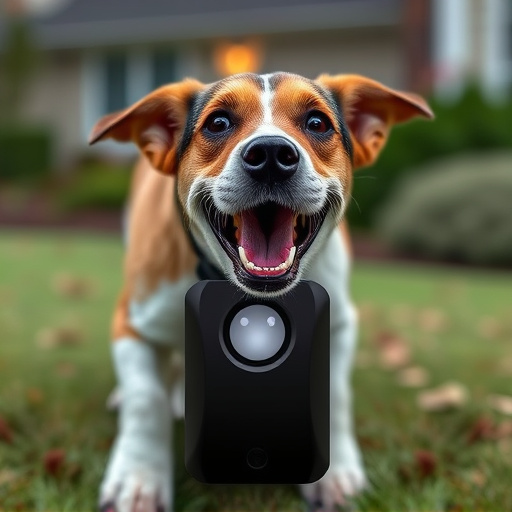Motion sensor technology revolutionizes pet safety with innovative barking dog alarms that detect and respond to movement. These sensors differentiate between normal animal behavior and potential threats, minimizing false alerts. Tailored to specific pet needs, these devices offer a humane solution for responsible pet ownership. Integrating a motion sensor barking dog alarm enhances home security, especially in areas with high wildlife or human activity, by deterring intruders with realistic bark sounds. Effective installation and maintenance involve strategic sensor placement, regular testing, cleaning, and component replacement, ensuring accurate and reliable operation while promoting everyone's safety.
“Revolutionize your pet’s safety with cutting-edge technology—the Motion Sensor Barking Dog Alarm. This innovative system utilizes advanced motion sensors to detect and deter intruders, while also providing a gentle reminder for your furry friends through controlled barking.
In this comprehensive guide, we’ll explore the inner workings of motion sensor technology, its benefits for pets, and how integrating a barking dog alarm can boost overall security. We’ll also offer practical tips on installation, maintenance, and safety to ensure a seamless experience.”
Understanding Motion Sensor Technology: How It Works and Benefits for Pets
Motion sensor technology has revolutionized pet safety with innovative solutions like barking dog alarms. These devices are designed to detect and respond to movement, offering a non-intrusive yet effective way to protect your pets. The core of this technology lies in sensitive sensors that can distinguish between animals’ natural movements and potential threats. When an intruder or unfamiliar animal enters the sensor’s range, it triggers the alarm, scaring off unwanted visitors and alerting pet owners to potential dangers.
One significant advantage is its positive impact on pets, especially dogs. Unlike traditional alarms that may startle them, motion sensors respond only when necessary, minimizing false alerts. This technology allows dogs to move freely without constant monitoring, encouraging natural behavior while ensuring their safety. Additionally, these systems can be tailored to specific pet needs, making them a versatile and humane solution for responsible pet ownership.
Integrating Barking Dog Alarm: Enhancing the System's Effectiveness
Integrating a barking dog alarm into your pet alarm system can significantly boost its effectiveness, especially in areas with high wildlife or human activity. This device is designed to mimic a dog’s bark, creating an effective deterrent for potential intruders. The motion sensor technology ensures it only activates when movement is detected, reducing false alarms and conserving battery life.
By incorporating a barking dog alarm, your pet alarm system becomes more versatile and adaptable. It can be particularly useful in rural or suburban areas where traditional alarm systems may not always trigger promptly due to reduced noise levels. The realistic bark sound can startle would-be intruders and provide precious time for residents to respond, enhancing overall home security.
Installation, Maintenance, and Safety Tips for a Pet Alarm System
When installing a pet alarm system, such as a motion sensor barking dog alarm, place sensors strategically around your property to detect both intruders and unwanted animal behavior. Ensure the sensors have clear lines of sight, away from objects that might block their view, like tall grass or trees. Regularly test these sensors to maintain their accuracy, checking the batteries and ensuring no debris has obstructed them.
Maintenance is key to keeping your pet alarm system effective. Keep sensors clean, free from dust or dirt, as buildup can affect performance. Check for any signs of damage or wear and replace worn-out components promptly. Additionally, familiarize yourself with the control panel, knowing how to disarm the system and what alerts different alarms indicate. This ensures you’re prepared should an alert trigger unnecessarily or during an actual emergency. Prioritize safety by teaching your pets to ignore the alarm’s triggers, ensuring everyone in the household understands how to respond appropriately.
